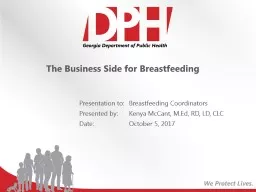PPT-Eat Right, Grow Strong
Author : alexa-scheidler | Published Date : 2017-07-12
Nutrition for Young Children WORKSHOP OBJECTIVES At the end of this workshop participants will be able to Describe why good nutrition is so important to young children
Presentation Embed Code
Download Presentation
Download Presentation The PPT/PDF document "Eat Right, Grow Strong" is the property of its rightful owner. Permission is granted to download and print the materials on this website for personal, non-commercial use only, and to display it on your personal computer provided you do not modify the materials and that you retain all copyright notices contained in the materials. By downloading content from our website, you accept the terms of this agreement.
Eat Right, Grow Strong: Transcript
Download Rules Of Document
"Eat Right, Grow Strong"The content belongs to its owner. You may download and print it for personal use, without modification, and keep all copyright notices. By downloading, you agree to these terms.
Related Documents













![[PDF READ ONLINE] Starting Off Right in Law School (Starting Off Right Series)](https://thumbs.docslides.com/1020243/pdf-read-online-starting-off-right-in-law-school-starting-off-right-series.jpg)
